#Aztecs
Explore tagged Tumblr posts
Text
Age of Empires 2 Jaguar Warrior

1K notes
·
View notes
Text

“The Atlantean Figures” (toltec culture) - mexico
#toltec#atlantis#light#consciousness#ascension#energy#magic#alchemy#spiritual awakening#archaeology#ancient#anthropology#aztecs#esoteric
478 notes
·
View notes
Text

#meme#mattsmemes#memes that make you go hmmm#memes#indigenous#indigenous culture#sun god#human sacrifice#politicians#no downside#good plan#aztecs#aztec mythology#mayans#aztec#aztec gods
195 notes
·
View notes
Text
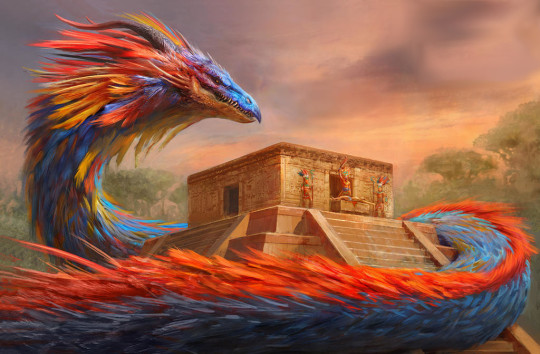
#quetzalcoatl#feathered serpent#art#mesoamerica#mesoamerican#mythical creatures#mythology#snake#snakes#serpent#serpents#religion#deity#aztec gods#aztec#aztec mythology#aztecs#mexico#dragon#dragons#mexica#aztec empire#architecture
398 notes
·
View notes
Text
The Celto-Nahuan Empire
For a stroll down memory lane, I've been playing some Civilization III lately. I started as the Celts on an archipelago map, hoping to be left alone as a I re-learn the game.
I discovered that I shared my starting continent with the Aztecs, whom I conquered over the course of three grueling wars that left us both in a tech deficit relative to several other larger powers on other continents. It's currently 1600 AD and I'm halfway through the Medieval Era. Persia is already in the Industrial Era and has a massive culture lead, too.
During one of my wars with the Aztecs, the Dutch hopped over and tried to plant a colony where I had just razed an Aztec city, but I stomped that out right quick. They never sent retribution, and accepted a peace treaty a few decades later.
Anyhow, I have role-played as a magnanimous conqueror who embraces the multicultural nature of his new empire. While I did have to raze a lot of Aztec cities in sub-optimal locations, I repopulated the new cities I founded with captured Aztec workers & settlers. Now that Montezuma is defeated, I don't have to worry about their disloyalty.
This all has me wondering what a cultural fusion of Celts and the indigenous peoples of Central Mexico would look like...
59 notes
·
View notes
Text
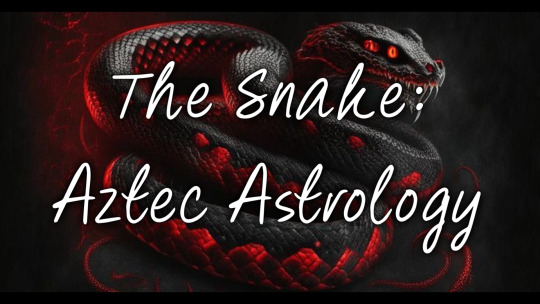
AZTEC ASTROLOGY
—7— (the snake/coatl)
Aztec Astrology is an old form of astrology dating back to 600 BC. This type of astrology has 20 different signs rather than 12. It originates from an ancient tribe, the Aztecs, who were particularly fond of astronomy
Snake Dates: January 7/19/31, February 5/17, March 1/13/25, April 6/18/30, May 12/24, June 5/17/29, July 11/23, August 4/16/28, September 9/21, October 3/15/27, November 8/20, December 2/14/26

Traits of the snake/coatl:
• Associated with Saturn
• They prefer to be alone most of the time
• Seductive and usually sexually attractive physically
• Best athletes out of all the aztec signs
• Confident if they’re at a higher vibration but cocky if at a lower vibration
• Goal oriented
• Extremely spiritual
• Intelligent
• Can become wealthy through connections
• Very loyal to the people they love but if they don’t care about you they shouldn’t be trusted
• Unpredictable
• Few understand them yet people will still think they do
• Few in their lives get to know them well
• Very secretive
• Sneaky
• Natural talent in business careers
• Usually have an unstable love life because they never know what they want
• May have anger issues/be merciless if you hurt them
• Possessive
• Manipulative/abuse of power
• Their eyes look snake-like






#aztec astrology#the aztecs#aztecs#astrology#astrology blog#astrology chart#birth chart#astrology community#astro community#snake aztec astrology#the snake#aztec snake
153 notes
·
View notes
Text
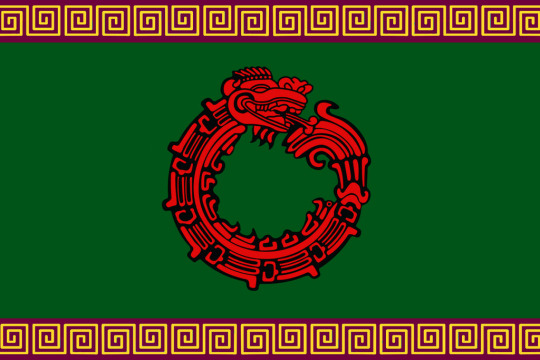
Congratulations to Aztec Empire by @arthurdrakoni for winning the Alternate History Flag Wars!
It won against United Provinces of the Río de la Plata by RULANGA with 60.1 percent of the vote!
This flag represents an alternate history Aztec Empire that defeated Cortés. The original post by arthurdrakoni that the flag appears in can be found here. Thank you to everyone who submitted flags! There were so many creative alternate history flags in this tournament!
33 notes
·
View notes
Text

Mayan Altar Used to Sacrifice Children Found in Ancient ‘City of the Gods’
An altar from the Teotihuacan culture, at the pre-Hispanic heart of what became Mexico, was discovered in Tikal National Park in Guatemala, the center of Mayan culture, demonstrating the interaction between the two societies, Guatemala's Culture and Sports Ministry announced this week.
The enormous city-state of Tikal, whose towering temples still stand in the jungle, battled for centuries with the Kaanul dynasty for dominance of the Maya world.
Far to the north in Mexico, just outside present day Mexico City, Teotihuacan — "the city of the gods" or "the place where men become gods" — is best known for its twin Temples of the Sun and Moon. It was actually a large city that housed over 100,000 inhabitants and covered around 8 square miles.
The still mysterious city was one of the largest in the world at its peak between 100 B.C. and A.D. 750. But it was abandoned before the rise of the Aztecs in the 14th century.
Lorena Paiz, the archaeologist who led the discovery, said that the Teotihuacan altar was believed to have been used for sacrifices, "especially of children."




"The remains of three children not older than 4 years were found on three sides of the altar," Paiz told The Associated Press.
"The Teotihuacan were traders who traveled all over the country (Guatemala)," Paiz said. "The Teotihuacan residential complexes were houses with rooms and in the center altars; that's what the residence that was found is like, with an altar with the figure representing the Storm Goddess."
Researchers posted video on social media showing aerial footage of the altar as well as detail of the structure's interior.
"It's something unique in Guatemala, nothing similar had been found," Paiz said in a statement.
It took archaeologists 1½ years to uncover the altar in a dwelling and analyze it before the announcement.
Edwin Román, who leads the South Tikal Archaeological Project within the park, said the discovery shows the sociopolitical and cultural interaction between the Maya of Tikal and Teotihuacan's elite between 300 and 500 A.D.




Román said the discovery also reinforces the idea that Tikal was a cosmopolitan center at that time, a place where people visited from other cultures, affirming its importance as a center of cultural convergence.
María Belén Méndez, an archaeologist who was not involved with the project, said the discovery confirms "that there has been an interconnection between both cultures and what their relationships with their gods and celestial bodies was like."
"We see how the issue of sacrifice exists in both cultures. It was a practice; it's not that they were violent, it was their way of connecting with the celestial bodies," she said.
The altar is just over a yard wide from east to west and about 2 yards from north to south. It is about a yard tall and covered with limestone.
The dwelling where it was found had anthropomorphic figures with tassels in red tones, a detail from the Teotihuacan culture, according to the ministry's statement.




The researchers published their findings in the archaeological journal Antiquity.
The researchers made their announcement less than a year after a hidden Mayan city was discovered in a dense Mexican jungle by a doctoral student who unknowingly drove past the site years ago on a visit to Mexico.
Tikal National Park is about 325 miles north of Guatemala City, and the discovery site is guarded and there are no plans to open it to the public. Tikal, a UNESCO World Heritage Site, reached its peak between 200 and 900 AD when Mayan culture encompassed parts of what are now Guatemala, Mexico, Belize, El Salvador and Honduras.
Teotihuacan, famous for its pyramids of the sun and the moon, is located about 25 miles northeast of Mexico City. That culture reached its peak between 100 and 600 AD.


#Mayan Altar Used to Sacrifice Children Found in Ancient ‘City of the Gods’#Tikal National Park#Teotihuacan culture#Kaanul dynasty#Teotihuacan#“the city of the gods”#Aztecs#Teotihuacan altar#ancient artifacts#archeology#history#history news#ancient history#ancient culture#ancient civilizations
24 notes
·
View notes
Text
Time Travel Poll Winner 4th Round Match Up 2:
These Questions are the winners from the previous iteration.
Please add new suggestions below, if you have them, for future consideration.
#Time Travel#Tenochtitlan#Aztecs#Indigenous History#Pre-Colonial Infrastructure#The Americas#Pre-Colonial Americas#1st Nations History#Pre-Colonial Infrastructure in the Americas
78 notes
·
View notes
Text

#meme#memes#dark humor#fact#facts#pre columbian#aztecs#aztec empire#history#history memes#shitpost#shitposting#humor#funny#satire#funny memes#irony#funny humor#funny meme#human sacrifice#religion#culture
58 notes
·
View notes
Text
Xolo Dogs



One of the oldest canine breeds, Xoloitzcuintli or Xolo dogs, have been around for more than 4000 years.
Ancient Mesoamerican cultures, like the Aztecs and Maya, treasured them for their spiritual importance because they thought they could fend off bad spirits and bring good fortune.
🎥📷: xochitl_official_
64 notes
·
View notes
Text

Aztecs fight the Spanish Conquistadors
42 notes
·
View notes
Text
I've been fascinated with the Aztec god Xolotl recently.
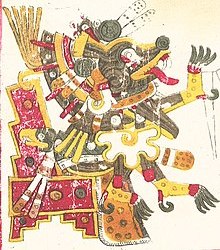
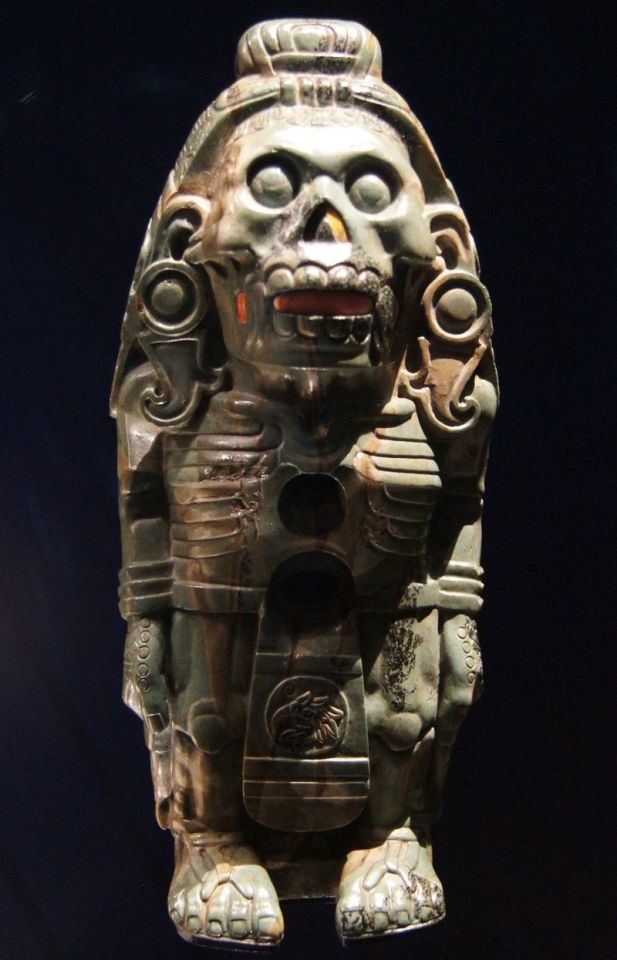
Xolotl (pronunced Sho-lo-t followed by an L like sound that doesn't exist in the English language) was a Mesoamerican god associated with many things, including fire, lightning, disease, deformity, twins, the Mesoamerican ball game, death, dogs, the planet Venus as the evening star, twilight, shapeshifting, and monsters. Xolotl was the twin and sometimes companion of his more famous brother Quetzalcoatl. Xolotl was thought to guide the dead in their journey through the underworld, and to guide the sun through the underworld each night. Xolotl is usually depicted as either a dog anthro, a man with a dog head, or a dwarf skeletal jester. Xolotl is usually depicted missing eyes. Xolotl seems to have been feared by the Aztecs and especially hated by the Spanish, but I have a more favorable view.
Some of the most prominent myths about Xolotl involve the story of the fifth sun, or how the current world was made from the previous, destroyed one.
The first myth involves the recreation of humanity. The tales differ as to whether Quetzalcoatl was responsible, Xolotl was responsible, or if it was a collaborative effort. The humans of the fourth world were destroyed, and humanity had to be brought back. To this end Xolotl and/or Quetzalcoatl traveled to the Aztec underworld, Mictlan and met with its king, Mictlantecutli. The god(s) asked to gather the bones of the previous humans so they could be created anew. Mictlantecutli. Mictlantecutli gives them tests but later decides against letting them gather the bones. Xolotl and/or Quetzalcoatl fall into pit, breaking the bones in the process which is why people have different heights. The bones are later resurrected. The versions of this tale differ as to which god went to Mictlan and whether they did tests for Mictlantecutli or simply stole the bones.
In the second myth, the gods are sacrificing themselves in a fire to create a fifth sun for humanity because the previous one went out. They choose Nanahuatzin, a poor and humble god with syphilis and some relation to Xolotl to become the moon; and Tecciztecatl to become the sun because he is wealthy and strong. However, Tecciztecatl is unable to throw himself in the fire when the time comes, so Nanahuatzin becomes the sun instead. Tecciztecatl is sacrificed after and becomes the moon (and also the man on the moon), but has a rabbit thrown at his face which is one explanation for the rabbit people sometimes see.
Later, Xolotl is the last to be sacrificed to the new sun. In some versions this is because he was the executioner for the previous gods. However, in some tales he refuses to sacrifice himself. Xolotl begs and cries until his eyes literally fall out but this does nothing. Xolotl transforms to escape Ehecatl who has been executing other gods to make the sun move. Xolotl at first transforms into a corn plant with two stalks, then an Agave americana, and finally an Axolotl amphibian. But he was still caught in the end.
What I find most interesting about Xolotl is his relation to disability. Since deformities are among Xolotl's best known domains, he could be considered a god of disabilities as well. Xolotl is also a god of monsters, and it's worth mentioning that the Nahua word "Xolo" which his name is derived from and means monster, is used for both mythological monsters and those with physical abnormalities, much like the Latin word "Monstrum". (I think in literature analysis the themes of monsters as outcasts could be explored more) In many, perhaps even most historical (and unfortunately even modern) societies the attitude towards those with disabilities has been very negative. In the Aztec world twins were considered unnatural, and sometimes one of them would be murdered shortly after birth. Wikipedia mentions an speculation by Eduard Seler that resonates with me: that Xolotl represents the murdered twin who dwells in the underworld while Quetzalcoatl is the living one who is cherished in the world of light.
Another connection with Xolotl and disability is that he was sometimes depicted as a jester with dwarfism. It's relevant the jesters around the world were often disabled. European court jesters were known for having the freedom to criticize and mock royalty, and were sometimes selected from the intellectually disabled because they could not be held responsible for what they said. Additionally, the Spanish during the colonization of the Aztecs sent some Aztec jesters to Spain, who were described as humpbacks.
This is what I find most interesting about Xolotl, that he is a reflection or shadow of society. Historically Xolotl was often considered a sinister god, but when society is itself sinister who is to be believed? My view of Xolotl is more favorable. The god of the disabled is feared because the disabled are hated. Xolotl is the outcast, who is hated and feared yet has done no wrong. Xolotl is the murdered twin, who looks upon the world of light and life, from a place of darkness, the world he was not given, never had the right to enjoy. He is the god who is looked upon with disgust due to his role in hardship, yet is the only one who stays with you through that hardship the entire time. Xolotl is the disabled child, who is called a child of shame and hidden away in some institution to be forgotten by their more privileged relatives. Xolotl is viewed with contempt, but his domains are just as necessary to the universe's function as any of the more handsome gods. The janitor, who is viewed with contempt and disgust yet whose works are vital for society.
The "evil twin" Xolotl, misunderstood twin and hound of Quetzalcoatl who lives in the world's shadow, watching the world of life and guarding the light of the sun through the underworld.
#LONG POST#xolotl#aztecs#aztec mythology#aztec religion#aztec gods#mexica mythology#mesoamerica#ableism cw#cw ableism#ableism tw#ableism mention#infanticide mention#filicide mention#mesoamerican mythology#infodump#infodumping
237 notes
·
View notes
Text

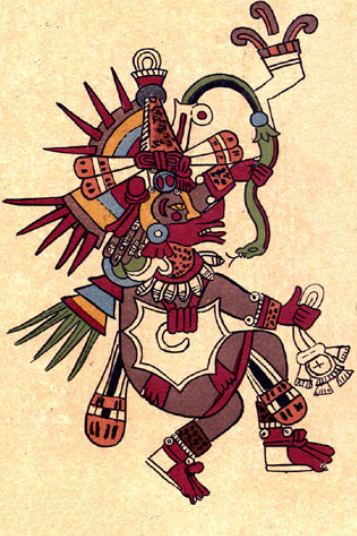


☀Quetzalcoatl



Mesoamerican god
Also known as: Ce Acatl, Ehécatl, Feathered Serpent, Kukulcán, One Reed
Quetzalcoatl is a deity in Aztec culture and literature. the Feathered Serpent, one of the major deities of the ancient Mexican pantheon. Representations of a feathered snake occur as early as the Teotihuacán civilization (3rd to 8th century ce) on the central plateau. At that time Quetzalcóatl seems to have been conceived as a vegetation god—an earth and water deity closely associated with the rain god Tlaloc.
In Aztec times (14th through 16th centuries) Quetzalcóatl was revered as the patron of priests, the inventor of the calendar and of books, and the protector of goldsmiths and other craftsmen;


☀ Xochicalco | Quetzalcoatl | Mexico
14 notes
·
View notes
Text


beneficial colors for the aztec signs.
monkey: gold/yellow
flint: bright red
rain: dark red/maroon
cayman: light green
house: dark green
flower: white
snake: orange
deer: brown
jaguar: black
cane: violet
rabbit: indigo/blue
eagle: silver

aztec astrology dates
#aztec astrology#the aztecs#aztecs#astrology#astrology blog#astrology chart#birth chart#astrology community#astro community
135 notes
·
View notes
